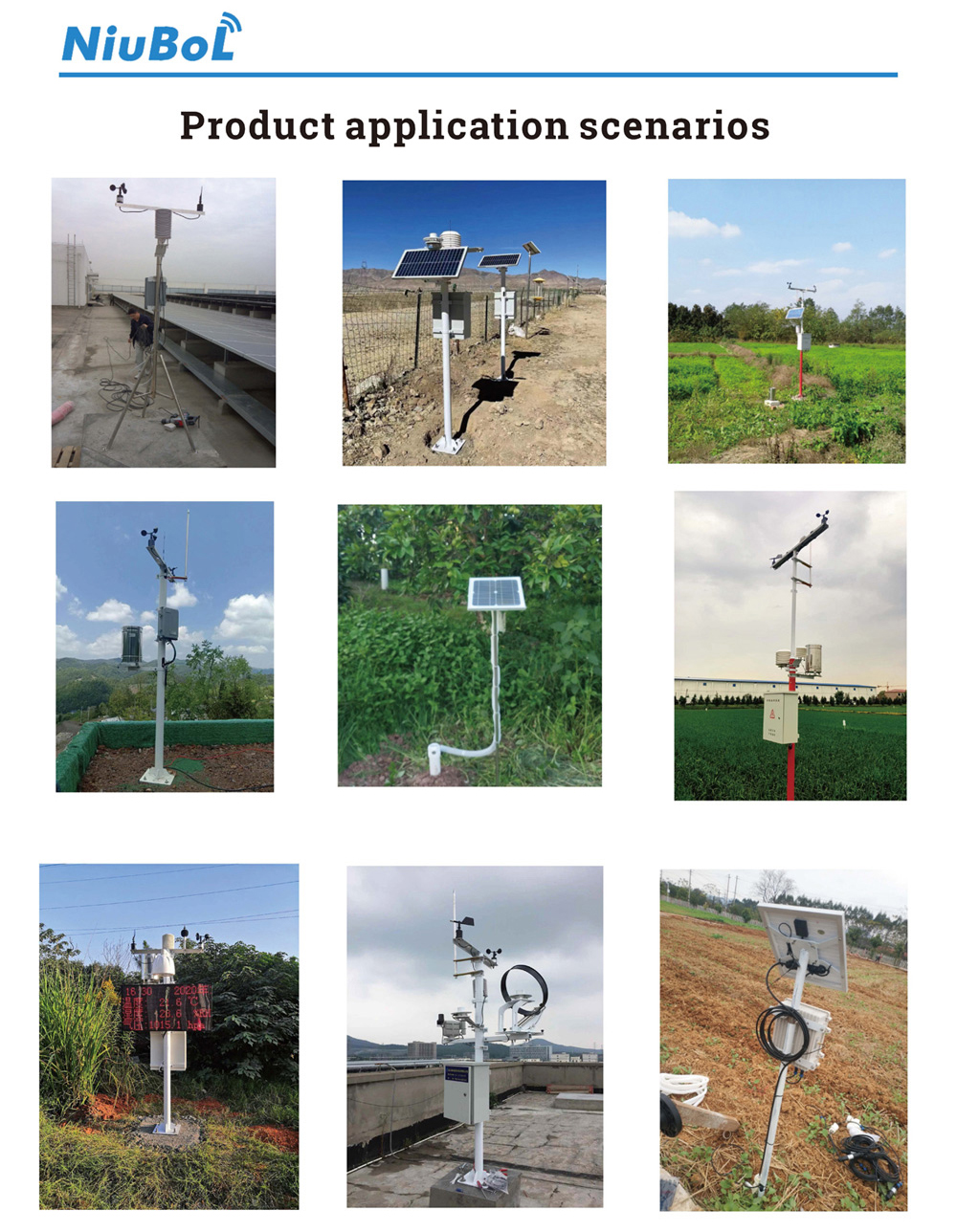

— Blogs —
—Products—
 Consumer hotline +8618073152920
Consumer hotline +8618073152920 WhatsApp:+8615367865107
Address:Room 102, District D, Houhu Industrial Park, Yuelu District, Changsha City, Hunan Province, China
Product knowledge
Time:2024-06-11 20:55:04 Popularity:1737
To determine the number of automatic weather stations needed in a 100,000 square kilometer area, several factors need to be considered, including but not limited to:
1. Data accuracy and purpose: Different research or applications may have varying requirements for the precision of weather data. For example, agricultural, weather forecasting, and climate research purposes may require different densities of weather stations.
2. Terrain and climatic conditions: Complex terrain (such as mountainous regions) or diverse climatic conditions (such as coastal areas versus inland areas) may require higher densities of weather stations to accurately capture local variations.
3. Existing standards and best practices: International and national meteorological organizations often have recommended standards for the deployment of weather stations. For instance, the World Meteorological Organization (WMO) may provide relevant guidelines.
4. Budget and resource constraints: Installing and maintaining weather stations require funding and technical support, so the actual number of stations deployed may be limited by these factors. More weather stations imply higher maintenance and operational costs, which need to be taken into account during planning and deployment.
5. Technological factors: If the weather stations utilize the latest technology that can provide more accurate data and broader coverage, the number required may be less.
It is advisable to collaborate with meteorological experts and relevant authorities for detailed assessments and planning to determine the most suitable density for the deployment of automatic weather stations.
A Reference Scenario
Here is a suggested deployment plan for automatic weather stations based on different regional characteristics and requirements:
1. Plain regions: Deploy the stations at an average spacing of 25 kilometers.
Calculation: Assuming an average spacing of 25 kilometers, for a 100,000 square kilometer area, approximately (100,000 / 25)^2 = 1600 weather stations would be needed.
2. Coastal areas and major river basins: Deploy the stations at an average spacing of 10 kilometers.
Calculation: Assuming an average spacing of 10 kilometers, for a 100,000 square kilometer area, approximately (100,000 / 10)^2 = 10000 weather stations would be needed.
3. Mountainous regions: Design based on specific topographical features, geological hazard occurrence, and annual average precipitation.
Based on the information provided, the average spacing is less than 25 kilometers, so let's take 20 kilometers as the spacing.
Calculation: Assuming an average spacing of 20 kilometers, for a 100,000 square kilometer area, approximately (100,000 / 20)^2 = 2500 weather stations would be needed.
4. Urban areas: Design based on the city's annual precipitation, population, and characteristics of disasters.
Assuming an average spacing of less than 10 kilometers, with priority areas having a spacing of 5 kilometers.
We cannot provide a specific number as it depends on the specific circumstances of the city.

Please note that the above figures are for reference only, and the specific number of weather stations needs to be adjusted and evaluated based on actual conditions. If there are higher data accuracy requirements or special terrain conditions, it may be necessary to increase the number of weather stations accordingly.
I hope this information is helpful to you. If you have further specific requirements or additional questions, please feel free to ask.
Prev:Ultrasonic snow depth sensor monitoring station
Next:Weather Station for Popularization of Science in Primary and Secondary School Campuses
Related recommendations
Sensors & Weather Stations Catalog
Agriculture Sensors and Weather Stations Catalog-NiuBoL.pdf
Weather Stations Catalog-NiuBoL.pdf
Related products
 Combined air temperature and relative humidity sensor
Combined air temperature and relative humidity sensor Soil Moisture Temperature sensor for irrigation
Soil Moisture Temperature sensor for irrigation Soil pH sensor RS485 soil Testing instrument soil ph meter for agriculture
Soil pH sensor RS485 soil Testing instrument soil ph meter for agriculture Wind Speed sensor Output Modbus/RS485/Analog/0-5V/4-20mA
Wind Speed sensor Output Modbus/RS485/Analog/0-5V/4-20mA Tipping bucket rain gauge for weather monitoring auto rainfall sensor RS485/Outdoor/stainless steel
Tipping bucket rain gauge for weather monitoring auto rainfall sensor RS485/Outdoor/stainless steel Pyranometer Solar Radiation Sensor 4-20mA/RS485
Pyranometer Solar Radiation Sensor 4-20mA/RS485
Screenshot, WhatsApp to identify the QR code
WhatsApp number:+8615367865107
(Click on WhatsApp to copy and add friends)
